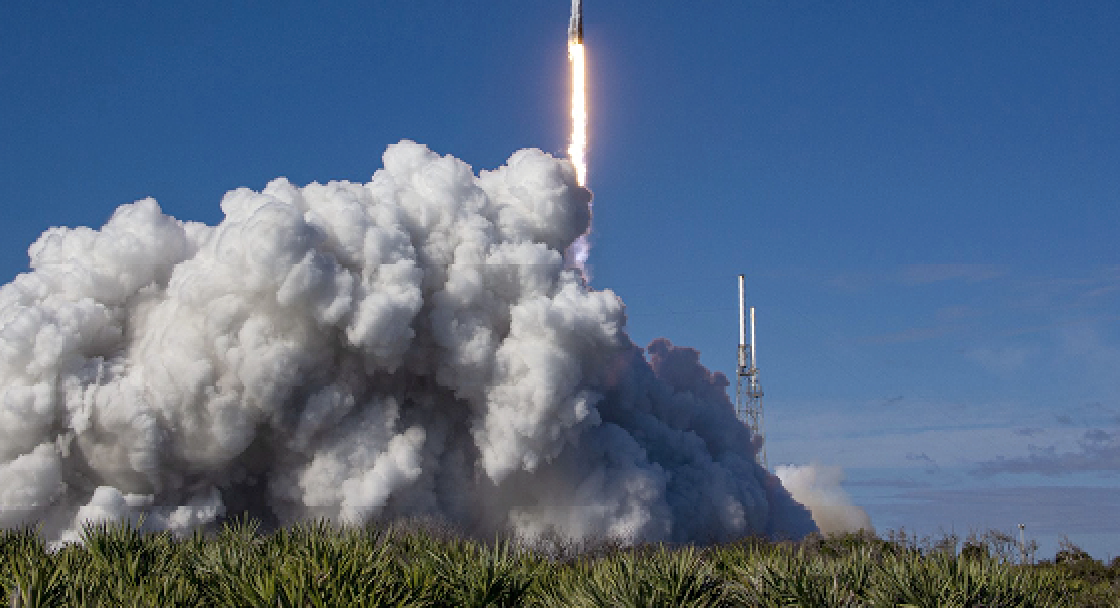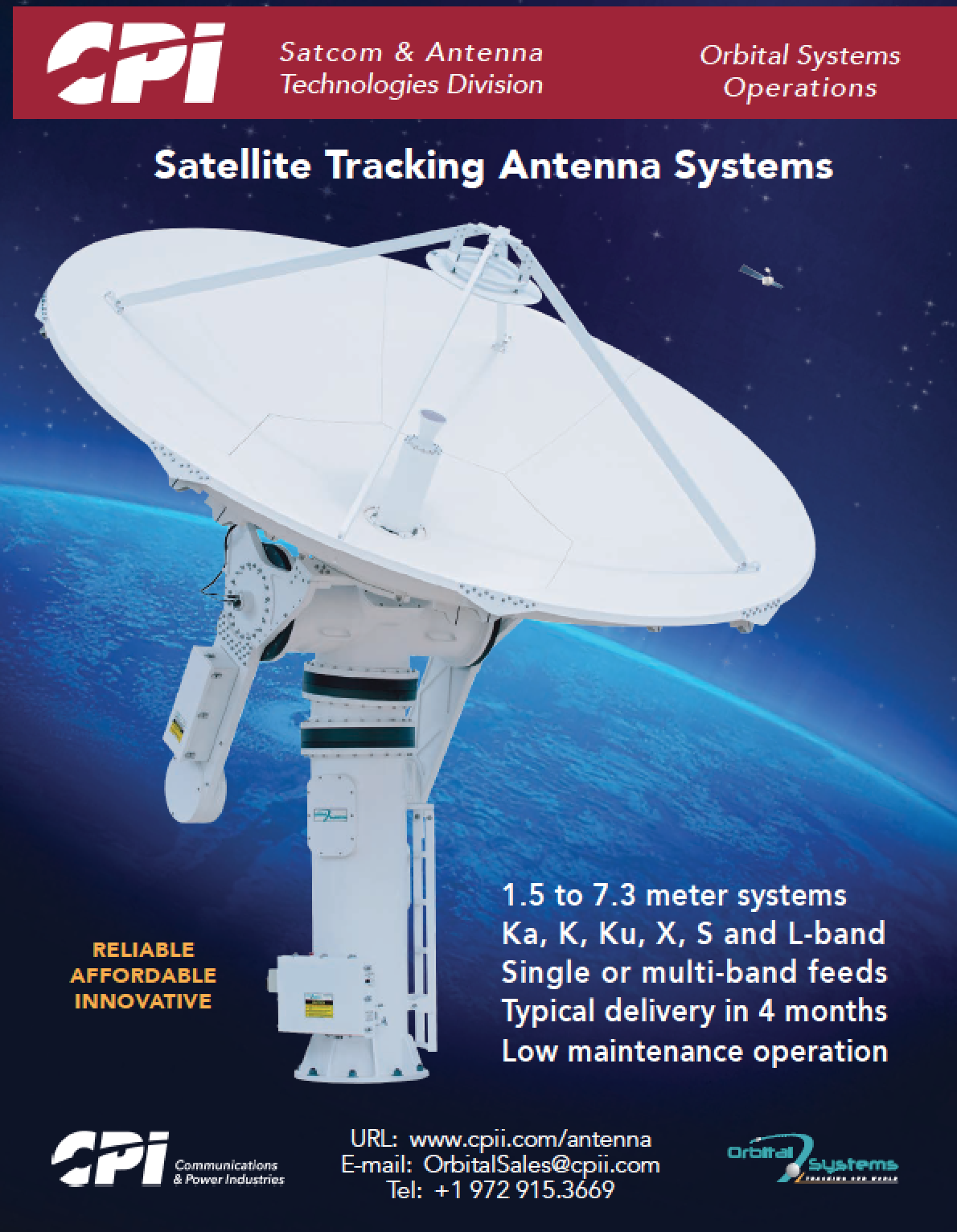SpaceX’s Transporter-3 Mission Launch Is Successful — 105 Spacecraft Climb To Their Orbits
SpaceX‘s January 13th, two-stage, Falcon 9 launch successfully lifted the $50 million Transporter-3 mission from Space Launch Complex 40 (SLC-40) at Cape Canaveral Space Force Station in Florida.

The 29-minute launch window opened at 10:25 a.m. EST, or 15:25 UTC. Falcon 9’s first stage booster previously launched Crew Demo-2, ANASIS- II, CRS-21, Transporter-1, and five Starlink missions.
Following stage separation, SpaceX brought home the Falcon 9’s first stage on Landing Zone 1 (LZ-1) at Cape Canaveral Space Force Station.
Transporter-3 is SpaceX’s third, dedicated, rideshare mission, and on board this launch were 104 spacecraft.
Overall, this was the 145th SpaceX mission and the 137th mission for the Falcon 9 launch vehicle.
This was also the first time in six months that the company engaged in a successful land landing at Cape Canaveral of the Falcon 9 booster.

SpaceX’s Transporter-3 Mission Launch Is Successful — 105 Spacecraft Climb To Their Orbits The first and second stages of the partially reusable Falcon 9 rocket are powered by Merlin engines and use cryogenic liquid oxygen and RP-1 (rocket grade kerosene) fuel.
Aboard the Falcon 9 for orbit placement were satellites from companies D-Orbit, Exolaunch and Spaceflight — these firms provide brokerage services for actors that wish to launch their smallsats to orbit.
Additional satellites were launched for Capella Space, Iceye, Planet, Sen, Spire, Umbra Space and Unseenlabs.
Launch imagery is courtesy of the SpaceX streaming launch infocast.
Loft Orbital Signs Airbus To Build 15 Arrow Satellite Platforms
Airbus has been contracted to supply space start-up Loft Orbital with more than 15 satellite platforms derived from the Airbus Arrow platform, the foundational satellite platform of the OneWeb constellation.

There are 394 Airbus Arrow platforms on-orbit for the OneWeb constellation and a further 254 are being produced to complete the 648 spacecraft required by OneWeb. With this acquisition, Loft Orbital confirms its intention to make the Airbus Arrow platform a true workhorse enabling its service business model.
Loft Orbital offers a true end-to-end service enabling customers to rapidly deploy and operate their payloads on reliable high-performance satellites at an unprecedented simplicity and affordability.
Loft Orbital has also contracted Airbus to modify the Arrow platform to make it suitable for a wider range of longer lifetime missions and applications.
Loft Orbital has offices both in the USA and France, being based in the heart of Silicon Valley in San Francisco, and in the European space capital Toulouse, and intends to continue rapidly growing its French presence following this contract relationship with Airbus.
Airbus previously benefited from public support to develop the Arrow platform and OneWeb pilot line in Toulouse.
The improvements to the Arrow platform, including all the engineering, qualification, test, and production of the first few spacecraft will be performed by Airbus in Toulouse.
The production at scale of the remaining Arrow- derived platforms will be performed by Airbus.
OneWeb Satellites (AOS).
Arianespace To Launch ESA’s FLEX & ALTIUS Satellites Via Vega-C Rocket
A contract signed with Arianespace secures the joint launch for two satellites that will further the knowledge of our home planet. Scheduled to lift off on a new class of rocket, ESA’s Vega-C, from Europe’s Spaceport in mid-2025, FLEX will yield new information about the health of the world’s plants and Altius will deliver profiles of ozone and other trace gases in the upper atmosphere to support services such as weather forecasting.

FLEX is an Earth Explorer research mission. Earth Explorers, which are pivotal to ESA’s FutureEO program, are built to show how pioneering space technology can return novel information about how our planet works as a system and to better understand our rapidly changing world.
Although essentially built for science, many of these missions also deliver information that has direct practical uses. Moreover, once the technology and applications have been proven, Earth Explorers, importantly, provide the sound heritage for future satellite missions designed to provide systematic data for services that benefit daily life.
FLEX will help address one of our biggest challenges: understanding the health of Earth’s vegetation, which is critical to improve food security.

Artistic rendition of the Altius smallsat,
courtesy of ESA.
The planet’s growing global population is placing mounting pressure on the production of food, animal feed, biological fuels and pharmaceutical products. It is estimated that there will have to be more than a 50% increase in agricultural production by 2050 to meet demand. Understanding plant health and productivity is therefore essential to managing resources. FLEX will shine a light on plant health.
Although photosynthesis is one of the most fundamental processes on the planet, it has not been possible to measure it directly on large spatial scales. However, when plants photosynthesize, they emit a faint fluorescent glow. This glow is invisible to the naked eye, but, remarkably, it can be measured from space. Carrying a novel instrument called the Fluorescence Imaging Spectrometer, FLEX will measure this fluorescent signal to shed new light on the functioning of our vegetation. The information will be used to assess the functioning, health and stress of plants.
Altius is a smaller class satellite, but it will fill a very important gap in the continuation of ‘limb’ measurements for atmospheric science. It is being developed within ESA’s Earth Watch program and financed mainly by Belgium, with contributions from Canada, Luxembourg and Romania. This new mission is being built to deliver vertical profiles of ozone and other atmospheric gases.
While the ozone hole over Antarctica has been recovering in recent years, it is still a serious concern. And, needless to say, the understanding and monitoring of Earth’s atmosphere, with the rise in greenhouse gases that fuel climate change, is one of the most serious environmental issues humankind is currently facing.

Artistic rendition of Vega-C on the launch pad,
courtesy of ESA.
Carrying an instrument that images in the ultraviolet, visible and near- infrared channels, the Atmospheric Limb Tracker for Investigation of the Upcoming Stratosphere, or Altius for short, will measure both stratospheric ozone and other atmospheric trace gases such as nitrogen dioxide and aerosols that affect air quality.
As its name suggests, Altius will not look straight down on Earth, but will observe the atmosphere along Earth’s horizon. The ‘limb-sounding’ technique allows trace gases such as ozone to be profiled so that concentrations can be seen at different altitudes with high vertical resolution.
The contract, now signed with Arianespace, ensures passage into space for these precious satellite missions from Europe’s Spaceport in French Guiana.
Both satellites will be taken into orbit on ESA’s new Vega-C rocket. Building on the current Vega class, the first Vega-C will first take to the skies in 2022
Vega-C is more powerful than its predecessor and is capable of a wide range of mission types. It is a single body rocket about 35 meters high with a mass at liftoff of 210 tons. It is able to place about 2200 kg. in a reference 700 km.- polar orbit, meeting the needs of European institutions and industry.
While the contract to launch FLEX and Altius assumes they will be launched on the same rocket in mid-2025, there is provision for alternative shared launches, should there be a drift in the timing of their relative development processes.
Scotland’s Prestwick Spaceport Continues To Advance Plans For Smallsat Launches
The South Ayrshire Council in Prestwick, Scotland, has started the process of submitting a formal planning application for the Prestwick Spaceport development.

The Proposal of Application Notice (POAN) is the first step in the planning process for Prestwick Spaceport and signals the intent to apply for planning permission in early 2022. The submission of the POAN follows the Council’s submission of an Environmental Impact Assessment Screening Report last year that confirms that Prestwick’s space ambitions will not result in any significant adverse effects to the environment.
Launches from Prestwick will occur using horizontal or air launch, wherein an aircraft will carry a rocket containing smallsats a long distance to high altitude above the ocean. Once safely beyond inhabited areas and above the densest layer of the atmosphere, the rocket leaves the aircraft, ignites its engines and carries its payload to orbit.
Launch operations at Prestwick will consist mainly of processing rockets and their payloads, loading them onto a launch aircraft and then conventional aircraft take-offs will occur from the existing airport runways.

To provide horizontal launch capability, which until now has never been accessible anywhere in Europe, Prestwick Spaceport has signed a Memorandum of Understanding with Astraius, a leading UK-based commercial horizontal launch company that will launch rockets from standard transport aircraft that require no modification and will be able to place smallsats into a variety of orbits.
These smallsats can be used for a host of applications, such as monitoring climate change or tracking food supply chains to ensure that products in supermarkets are sustainably sourced. The city of Glasgow, Scotland, already designs and manufactures more cubesats than any city outside of the USA.
Prestwick aims to conduct the first rocket launch by the end of 2023, a goal supported by the Ayrshire Growth Deal, a multi-million-pound funding package that was signed last year. £80 million of the Growth Deal is dedicated to securing Ayrshire’s future as a leading region in the UK’s aerospace and space engineering industries.

Aerial view of Prestwick Aerospace.
Satellite launches from Prestwick, along with the other measures in the Ayrshire Growth Deal, will create many opportunities beyond launch, such as establishing a high-tech space supply chain in the region to complement the existing aerospace cluster, creating as many as 4,000 jobs for the local economy.
Horizontal launch from Prestwick will give Ayrshire the opportunity to be at the forefront of satellite launches in the UK as well as in Europe.
Councilor Peter Henderson, Leader of South Ayrshire Council, said, “Prestwick Spaceport has achieved another milestone by filing a POAN for its development. The POAN starts the process for Prestwick Spaceport submitting its formal planning application later this year. This follows on from Prestwick Spaceport securing a launch provider, Astraius, in September last year. By securing a launch partner and beginning the planning process, South Ayrshire is on its way to establishing Prestwick Spaceport and ensuring an exciting future for our local communities and making South Ayrshire part of the global space economy.”
Zoe Kilpatrick, Commercial Director at Glasgow Prestwick Airport said, “We are delighted to see the next stage of the Prestwick Spaceport being developed. We are building an industry in Ayrshire which will create jobs and investment for years to come. 2022 will see further developments as we partner with more organisations to grow and expand our space capabilities here at Glasgow Prestwick Airport. It is a very exciting time to be involved with the project and I look forward to seeing progress made over the coming months as we approach our first launch in 2023.”
The public will be invited to find out more about the Spaceport planning application, ask any questions about the proposed development and give their views at public consultation events to be held in February and March.
Further details will be made available in advance of these public consultations. The Aerospace and Space project is being funded with £32 million from the UK Government, £30 million from the Scottish Government, and £18 million from South Ayrshire Council as part of the £251 million Ayrshire Growth Deal – a ten year investment program jointly funded by the UK and Scottish governments and local authorities.
Virgin Orbit’s Latest Mission Successfully Reaches Above The Clouds With Seven Satellites
Virgin Orbit (Nasdaq: VORB) successfully deployed into orbit all seven customer satellites onboard the company’s LauncherOne rocket during the Above the Clouds mission.

Virgin Orbit’s 747 carrier aircraft Cosmic Girl took off from Mojave Air and Space Port on February 13th at approximately 1:39 PM PST/09:39 PM UTC and flew to a launch site over the Pacific Ocean, about 50 miles south of the Channel Islands.
After a smooth release from the aircraft, the LauncherOne rocket ignited and propelled itself toward space, deploying its payload into a precise target orbit approximately 500 km. above the Earth’s surface at 45 degrees inclination. This is the first time that anyone has reached this orbit from the West Coast.

Virgin Orbit ‘s LauncherOne rocket separates from the 747
carrier aircraft, Cosmic Girl, and the Above The Clouds
Mission is underway.
The launch was the company’s third successful flight, occurring less than one year from its first mission. Virgin Orbit has now successfully delivered commercial, government, international, and national security satellites to space, including new Above the Clouds customer Spire Global, Inc. (NYSE: SPIR), and first ever repeat customers: the U.S. Department of Defense Space Test Program and Polish company SatRevolution.
This launch was awarded to Virgin Orbit through its subsidiary VOX Space by the DoD’s Defense Innovation Unit (DIU) as part of the DoD Space Test Program’s (STP) Rapid Agile Launch (RALI) Initiative.
The satellites launched on the company’s latest mission include experiments in space-based communications, space debris detection, and in-space navigation and propulsion, as well as satellites that will serve the global agricultural sector. The launch brings the total satellites launched by Virgin Orbit to 26 in number.

Due to the unique air-launch system Virgin Orbit has developed, the Above the Clouds mission was launched in an orbit never before directly accessible from the West Coast of the Americas. Rather than launching from a fixed pad on the ground, Virgin Orbit conducts its launches from under the wing of a modified 747 aircraft. By flying the aircraft further out over the ocean, the company was able to launch on a trajectory no ground-launch rocket could have achieved. That direct injection into the target orbit
saved the satellites onboard this mission months of time and kilograms of fuel they might have otherwise spent correcting their orbit from what a landlocked launch site could provide them.
“Our customers are starting to hear back from their satellites that are checking in from orbit — and for us, that’s what success looks like. It’s a thrill for our team that this mission included our first repeat customers as well as our first ‘last minute ticket’ customers and reached an orbit that no one had ever reached from the West Coast before, all of which confirms the team’s ability to provide top tier launch service anywhere, anytime,” said Virgin Orbit CEO, Dan Hart. “On top of that, we flew through weather and a cloud layer that would have grounded any other launch I’ve worked on in my career, something only made possible by air-launch and our incredible team. We can say with confidence that in this new era of regular, frequent, successful missions, we can help our customers and partners use space technology to advance human knowledge and open space for good.”
“This accomplishment today really shows the future of space launch capabilities, something that is of paramount importance to national security,” said VOX Space President, Mark Baird, a retired U.S. Air Force Brigadier General. “We have the ability to launch anywhere, anytime and unwarned, which allows us to customize the launches to serve a government’s mission and goals, allowing us to be better mission partners in their space operations.”
“What an unforgettable experience to watch the Virgin Orbit team complete another perfect mission to space. I could not be prouder of the work they are doing. I am beaming alongside them,” said Virgin Orbit founder, Sir Richard Branson. “We supported experimental, important work for our three happy customers today. I congratulate them and our wonderful team.”




